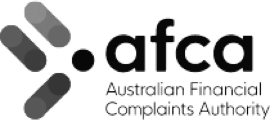By Andrew Colliver, CRO and Commercial Director
The Australian Dollar (AUD) has skyrocketed by around 25% since its low of mid-March (USD $0.55) driven by a mix of the weaker US Dollar (USD), strong iron ore prices (above USD $100 per tonne) and cautious optimism about Australia’s economic recovery from COVID-19 compared with other countries that are struggling with high infection rates.
The AUD struck a bump in the road during last Wednesday’s Asian trading session with the publication of Australia’s latest GDP figures. According to data published by the Australian Bureau of Statistics (ABS), domestic growth contracted 0.3% in the first quarter of 2020, having previously expanded 0.5% at the end of 2019.
Josh Frydenberg, Treasurer of Australia, said:
”Based on what we know from Treasury, we’re going to see a contraction in the June quarter which is going to be a lot more substantial than what we have seen in the March quarter.”
This also means that Australia is entering its first recession since 1991, something which is undoubtedly limiting the appeal of the ‘Aussie’ in the very short term. However, it appears that Australia will emerge from COVID-19 in a less bad position than many other nations, making the local currency relatively attractive.
For local businesses that purchase inventory overseas, opportunity knocks, softy. There may be an opportunity to purchase forward exchange contracts to lock in a rate as close as possible to the budgeted rate.
Budget setting and hedging policy
For many businesses purchasing from overseas, the move below 0.7000 in the AUDUSD in mid-March has seen the market move below their internal budgeted rate. These kinds of moves can create short-term cashflow problems. One way to manage these problems is to reach out to Banjo Loans for a short-term funding solution.
As we enter the new financial year, these businesses need to consider whether they have set the correct budget rate for their business, and review their hedging policy.
Consider these questions:
Is the budgeted rate competitive? Your budgeted rate is a core component of your cost of goods and needs to allow you to win business versus your competitors.
Is it realistic? It’s all very well to have the best budgeted rate that results in a very cheap product, but if it’s not realistic, it will end with a major FX loss at the end of the financial year.
Is it achievable? A budgeted rate, while necessary, introduces a risk into your business. You can manage that risk by hedging, but can you achieve that rate today? If not, the risk becomes immediate.
What percentage of overseas dollar purchases will the business hedge? Companies typically outline a range of 0% to 75% of forward orders depending on the risk profile of the Board, and the tenor of the forward exchange contract.
Worse-case rate
Once you have an effective and useful budgeted rate, by implementing an FX risk management policy and hedging your FX exposures, the budgeted rate can become a “worst-case” or “floor” rate.
The budgeted rate – for better or worse – becomes an internal risk so managing this risk is important.
This is why we say the budgeted rate needs to be achievable, because a budgeted rate that can’t be currently hedged at that rate becomes an instant risk and can potentially become a major distraction for a management team that should be focused on other topics.
With some hedging products, a “worst-case” rate is locked in, but you may still have the ability to benefit if the market moves in your favour.
From this perspective, businesses can have the best of both world: potential FX losses are avoided while the business will benefit if the market moves in their favour.
Sit down and think
Of course, the ability to manage both side of the market in this way comes at a cost. The rate you achieve to hedge in this way is typically less attractive than the rate you might achieve in the traditional spot FX market.
For many businesses, the decision about how to hedge will come down to the individual characteristics of their business. Businesses with low-margin, commodified products might have less opportunity to explore alternatives compared with other businesses.
Regardless, all businesses will find that approaching their FX risks with a more methodological and strategic focus is likely to bring benefits. For more information, speak to your accountant.


